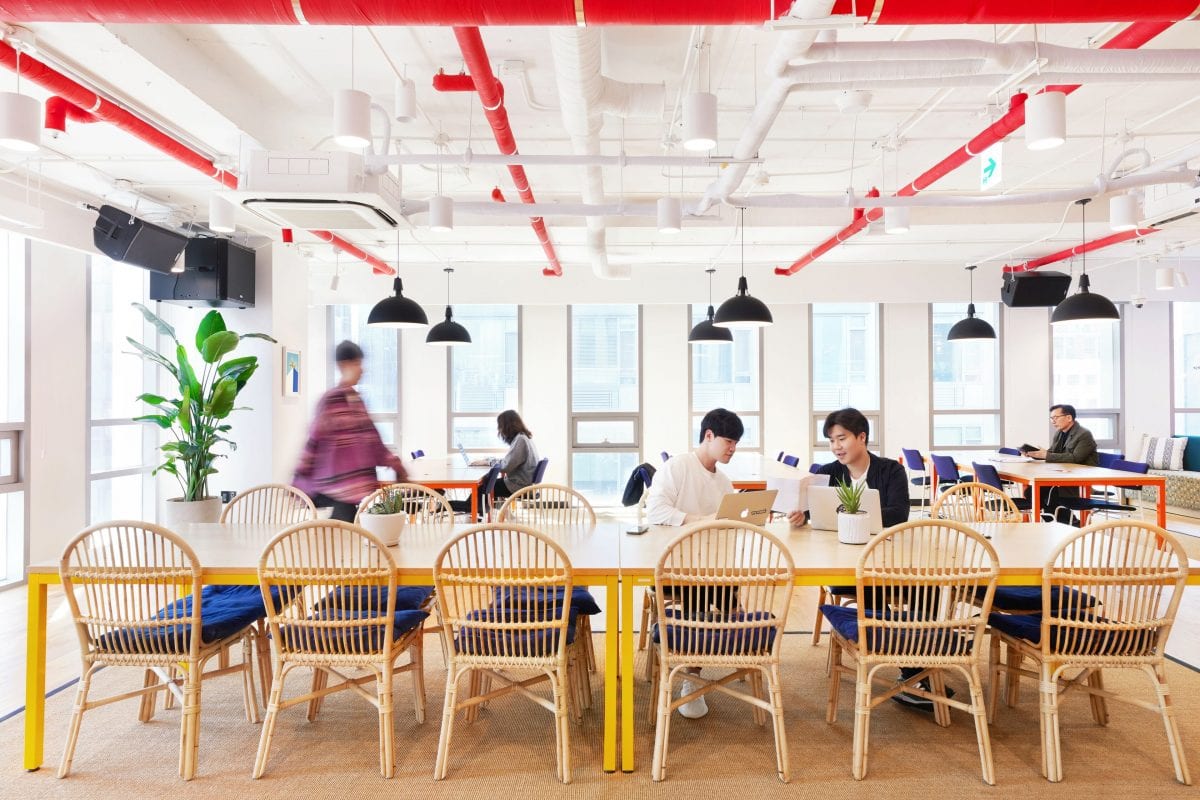
By Aleks Sheynkman
Director of Engineering
SpaceIQ
Coworking is a booming industry that’s growing ever-larger by the year. As technology mobilizes the workforce and remote work becomes more common, demand for workspace rises. But coworking isn’t a panacea. There are problems with coworking spaces that, if not addressed correctly, hinder workers instead of helping them.
Coworking is about more than providing a desk and chair for a temporary occupant (learn more, read what is coworking). It’s about creating a balanced, shared workplace where anyone can work in whatever capacity their job demands. Beyond high-speed Internet access and a place to sit, coworking spaces should offer atmosphere, comfort, convenience, and accessibility. Workers need to get more out of a coworking space than they would in a home office, coffee shop, or a traditional office.
There are five big problems workplace managers must overcome to turn coworking spaces from disaster to success.
Problem #1: Constant distractions
One of the most prevalent challenges of working in a coworking space is noise pollution. The clacking of dozens of laptop keyboards, people chatting on the phone, and the bings, dings, and other computer prompts can drive the most patient person crazy. All make it difficult to concentrate.
Noise-cancelling headphones are one solution, as is mentally blocking out noise. Both put the onus on workers, when it’s the coworking space manager’s job to mitigate distractions as much as possible. Setting and enforcing etiquette rules is a good first step, such as silencing phones and computers to holding phone conversations in designated areas.
Facility design also helps. Consider natural and artificial barriers to split up the workplace without closing it off, or face desks to reduce peripheral distractions. Some coworking spaces even hand out ear plugs—whatever it takes to reduce constant distractions and keep workers focused.
Problem #2: Shared-space friction
Put a diverse group of people in a confined space and it won’t be long until sparks fly. They may not be in a “traditional” office, but coworking professionals still have deadlines to meet and projects to focus on. When they’re interrupted or feel like their space is violated, they’re going to get defensive. The coworking model works when managers find ways to reduce friction.
A good desking arrangement can prevent friction by allotting each person enough space to spread out. Moreover, assigned spaces or delegating specific areas to certain work functions cuts down on conflict and confusion. Here again, etiquette goes a long way.
Make sure visitors have the space they need to work, but be sure to put limits on sprawl. Different types of workspaces are a great way to get ahead of this issue—individual desks for minimalist workers vs. private, collaborative rooms for groups working on projects.
Problem #3: Lack of privacy
Lack of privacy is one of the biggest coworking space challenges. Nothing beats the privacy of working at home, which means coworking spaces should offer some degree of seclusion.
Desk arrangement and space allocation are keys to creating privacy. Maximizing space between individual workstations is a simple way to offer isolation, though it comes at the expense of efficient space utilization.Creative layouts can also help. A well-placed plant can block views into a workstation. A soundproof workspace offers privacy for phone calls and face-to-face meetings. Even simple fixtures like screens can help boost solitude.
Problem #4: Meeting diverse expectations
One reason coworking spaces fail is because they try to hone-in on specific worker expectations. Many niche spaces thrive because they attract unique groups. But general coworking spaces don’t have the luxury of being that specific. To attract the most recurring workers, you need to set the highest baseline expectations.
Meeting diverse expectations requires a twofold approach. First, ensure the layout of available workspaces is diverse and inclusive. Then, create ambiance through design. Every coworking space needs to promote productivity and provide accommodating workspaces. Not every coworking space need look the same. Create a floor plan that encourages unimpeded work and ensures a good experience. The ambiance of your unique coworking space design will keep people coming back.
Problem #5: Managing the ebb and flow
In many ways, a coworking space is like a gym. Not everyone with a membership will be there at the same time every day.. As a result, both business models rely on selling more memberships than total available capacity permits. The secret to keeping members happy is monitoring trends to mitigate overcrowding and friction.
A mix of assigned desk spaces and open areas creates balance in coworking spaces. Managers can also monitor check-in and volume trends to determine when spaces are busy vs. unoccupied. This helps coworking spaces set better pricing, offer specials, or conduct outreach marketing to better manage the ebb and flow of people.
Coworking success = Worker satisfaction
Address these problems and coworking operators can overcome the biggest drawbacks of managing shared workspaces. Eliminating distractions, preventing friction, and improving privacy ensures a space amenable to productivity. Meeting the broad baseline expectations of workers keeps them coming back. And, managing the flow of occupants keeps coworking facilities organized. The result is a better coworking experience.
Keep reading: The benefits of coworking.






